The composition of a list of unsafe home canning practices will vary depending on who you ask, and how many people you ask.
There will be some major dangers on the list. No doubt, though, a committee could stretch the list to pages long with many additional minor or rare unsafe practices.
This list is just meant to be the high level, major items that reputable home canning authorities would agree upon.
If you are doing any of these, then chances are most safe home canners would say you are doing risky canning.
With those caveats in mind, Healthycanning.com proposes that the greatest unsafe canning practices are, in alpha order:
- 1 1. Aspirin or other pill canning
- 2 2. Compost heap canning
- 3 3. Crockpot canning
- 4 4. Dishwasher canning
- 5 5. Microwave-canning
- 6 6. Open-kettle canning
- 7 7. Oven-canning
- 8 8. Pressure canning via guesswork
- 9 9. Recipes — out of date or untested
- 10 10. Solar-canning
- 11 11. Water-bath canning instead of pressure canning
- 12 The greatest home canning danger of all
-
13
Further reading
- 13.1 All jars of home preserves must be heat processed
- 13.2 Cowboy canners
- 13.3 Do not use Mason jars as meatloaf grease grabbers
- 13.4 Fractional sterilization" or "intermittent processing
- 13.5 Home Canning Cured Meats (Bacon, Brined, Corned, Ham, etc)
- 13.6 Home-canned cake
- 13.7 Inversion Canning
- 13.8 Microwave Canning
- 13.9 Open Kettle Canning
- 13.10 Oven Canning
- 13.11 Oven sterilization of Mason jars
- 13.12 Why do you have to process jars of jam?
1. Aspirin or other pill canning
“No to Canning Pills: ‘Canning pills’ went out with corset-covers. Old manuals might suggest that salicylic acid (read this ‘aspirin’) be dropped in each canning jar before it was capped. Such things never helped then and would not help now. No preservative added can offset dirty handling or inadequate processing.” [1] Hertzberg, Ruth; Greene, Janet; Vaughan, Beatrice (2010-05-25). Putting Food By: Fifth Edition (p. 61-62). Penguin Publishing Group. Kindle Edition.
2. Compost heap canning
“No to Processing in a Compost Heap. Whoever would have thought it? But there was a query based on the notion of holding containers of food at 140 + F/60 + C for a long time.” [Ed: by the heat generated in a compost heap.] [2] Hertzberg, Ruth; Greene, Janet; Vaughan, Beatrice (2010-05-25). Putting Food By: Fifth Edition (p. 62). Penguin Publishing Group. Kindle Edition.
3. Crockpot canning
“No to Canning in a Crockpot: We don’t know who could have advocated this, since we have never seen any such claims in print by the makers of Crockpots. But it has come up several times in letters to PFB, usually from writers who say they hope it’s safe, because they felt that slow-cooking was more likely to preserve nutrients than subjecting the food to heats like 240 F/116 C. All we need to say about a Crockpot is that if it’s on a long low-heat setting, chances are that the nastier micro-organisms will be encouraged to grow and breed like mad, and what else should you expect?” [3] Hertzberg, Ruth; Greene, Janet; Vaughan, Beatrice (2010-05-25). Putting Food By: Fifth Edition (p. 62). Penguin Publishing Group. Kindle Edition.
4. Dishwasher canning
Trying to “steam process” jars by the heat generated in a dishwasher during a dishwasher cycle.
Processing canned foods during a dishwasher cycle can be dangerous. The temperature of the water during the cleaning and rinsing cycle is far below that required to kill harmful microorganisms. Thus the product will be under-processed and unsafe to eat.” [4] PennState Extension. Canners and Canning Methods that are Not Recommended. Accessed March 2016.
5. Microwave-canning
See separate page on microwave canning.
6. Open-kettle canning
Just putting something in a bottle, slapping a lid on it, and if a seal takes hold, considering it done and putting it on the shelf.
See separate page on open-kettle canning.
7. Oven-canning
Taking a short-cut by trying to process bottles in an oven.
See separate page on oven canning.
8. Pressure canning via guesswork
Not following preparation and processing methods and times exactly, including any altitude adjustments required for your location. Following directions that you or someone else have just made up through guess work and reasoning.
9. Recipes — out of date or untested
Using out-dated recipes or untested recipes.
And from Isabel D. Wolf, of the University of Minnesota, about home-canning recipes: ‘avoid following the home-canning advice of celebrities, old cookbooks, ‘back to nature’ publications, and out-of-date home-canning leaflets. Some potentially dangerous instructions can be found in old official publications, even those of this state!’ ” [5] Hertzberg, Ruth; Greene, Janet; Vaughan, Beatrice (2010-05-25). Putting Food By: Fifth Edition (p. 45). Penguin Publishing Group. Kindle Edition.
10. Solar-canning
Using the heat of the sun to heat up a box in which you place the jars for procesing.
11. Water-bath canning instead of pressure canning
Water-bath processing low acid food products instead of pressure canning them
__________________
Past those points above, though, once you start to expand the list from there, internecine wars start to break out even amongst the “safe canning police” people about venial versus mortal sins.
The greatest home canning danger of all
Out of the above list, the greatest danger of all perhaps is in not pressure canning something that must be pressure canned:
…because in almost every account of an outbreak of food-borne botulism, the Editorial Note deduces that ‘inadequate processing’ or ‘inadequate heating’ allowed the toxin to form, with the help of a bad seal. Spelling it out, this means that low-acid foods that should have been pressure-processed were merely given a Boiling–Water Bath; and that strong-acid foods—which should have been given a Boiling–Water Bath to sterilize container and heat contents adequately—were canned instead by “open-kettle,” or worse.” [6] Hertzberg, Ruth; Greene, Janet; Vaughan, Beatrice (2010-05-25). Putting Food By: Fifth Edition (p. 60). Penguin Publishing Group. Kindle Edition.
Further reading
E. M. D’Sa, E. L. Andress, J. A. Harrison and M. A. Harrison. Survey of Home Canning Practices and Safety Issues in the U.S.. Paper 005-04. Presented at the Institute of Food Technologists Annual Meeting, Chicago, IL, July 29, 2007. (Link valid as of March 2015)
University of Nebraska-Lincoln Extension. Unsafe Canning Practices. (Link valid as of March 2015)
All jars of home preserves must be heat processed
Cowboy canners
Do not use Mason jars as meatloaf grease grabbers
Fractional sterilization" or "intermittent processing
Home Canning Cured Meats (Bacon, Brined, Corned, Ham, etc)
Home-canned cake
Inversion Canning
Microwave Canning
Open Kettle Canning
Oven Canning
Oven sterilization of Mason jars
Why do you have to process jars of jam?
References

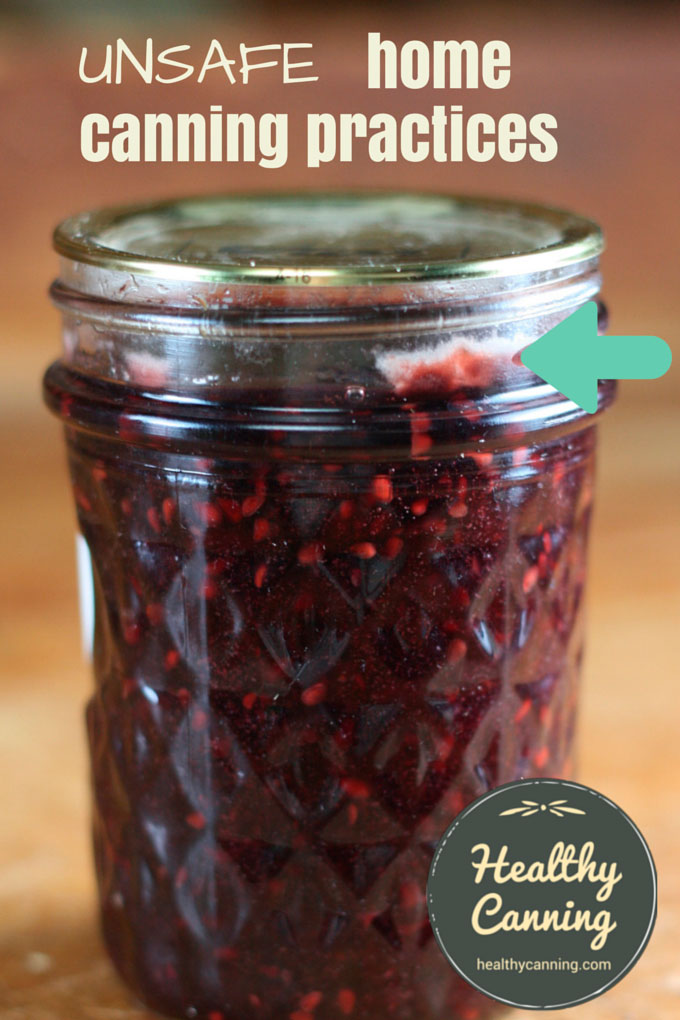
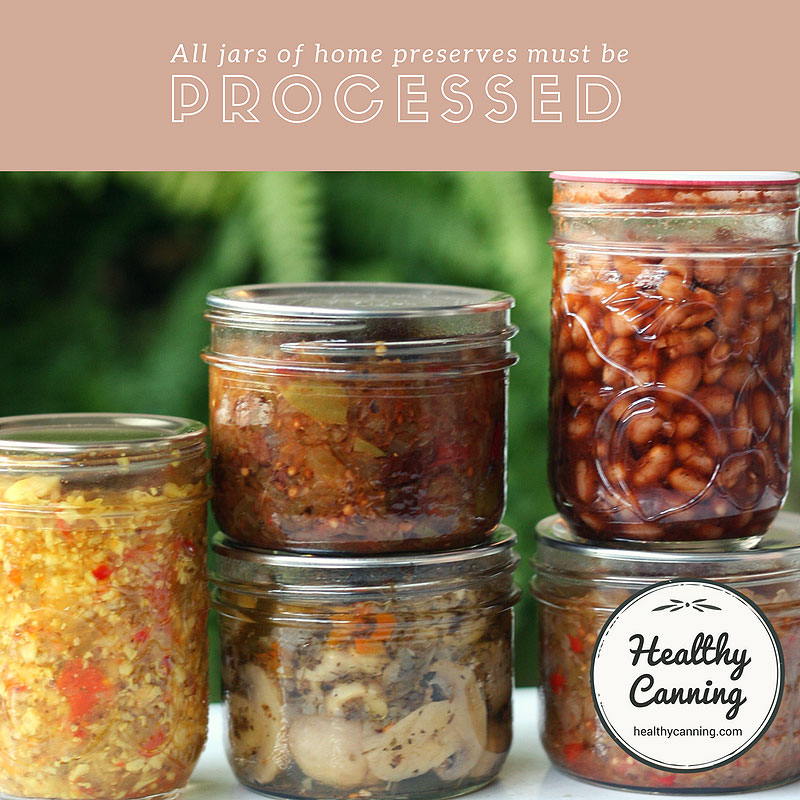
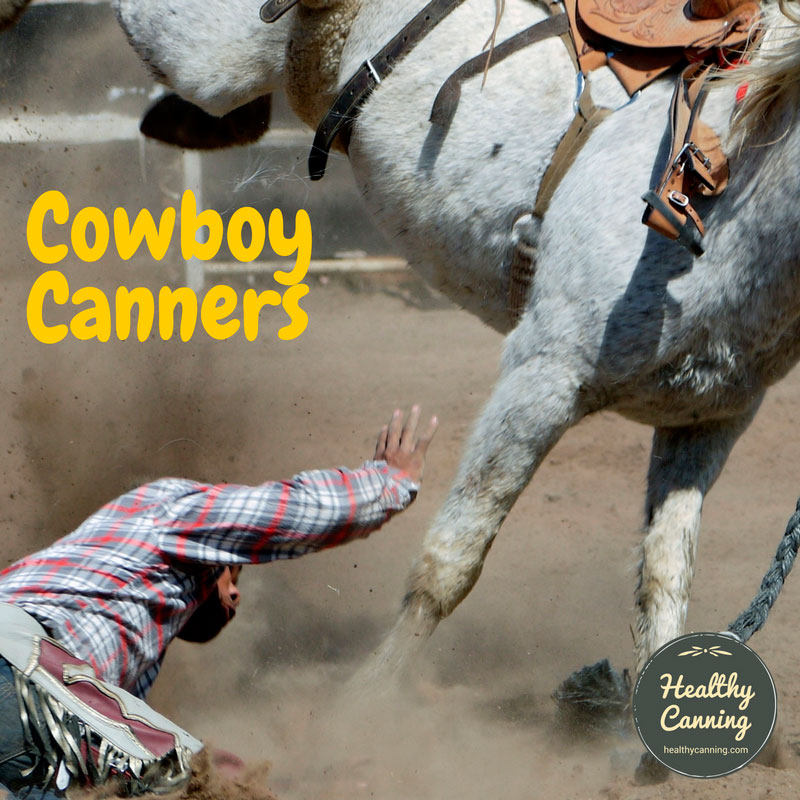
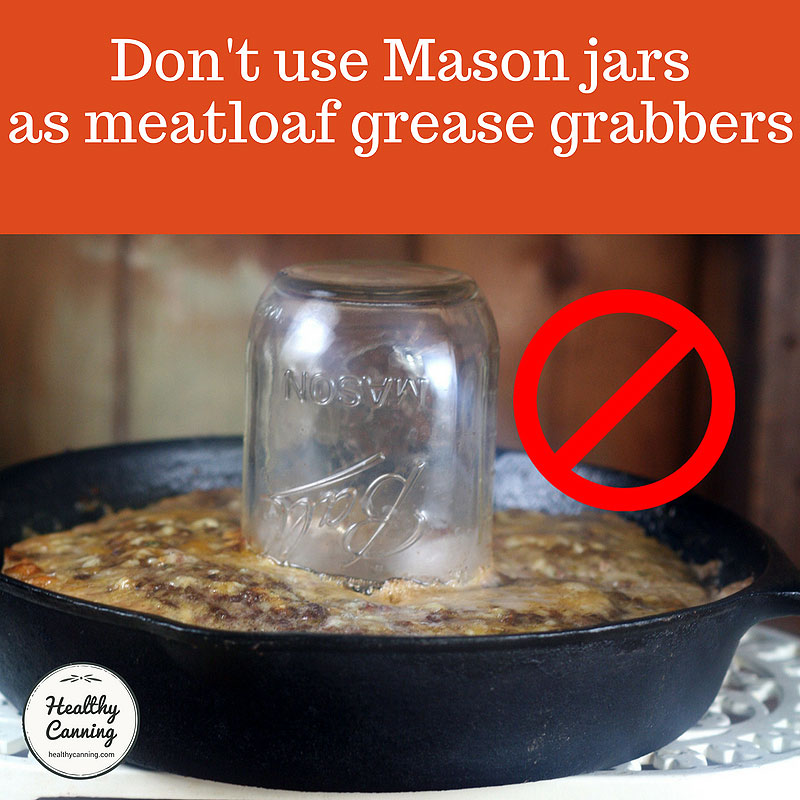
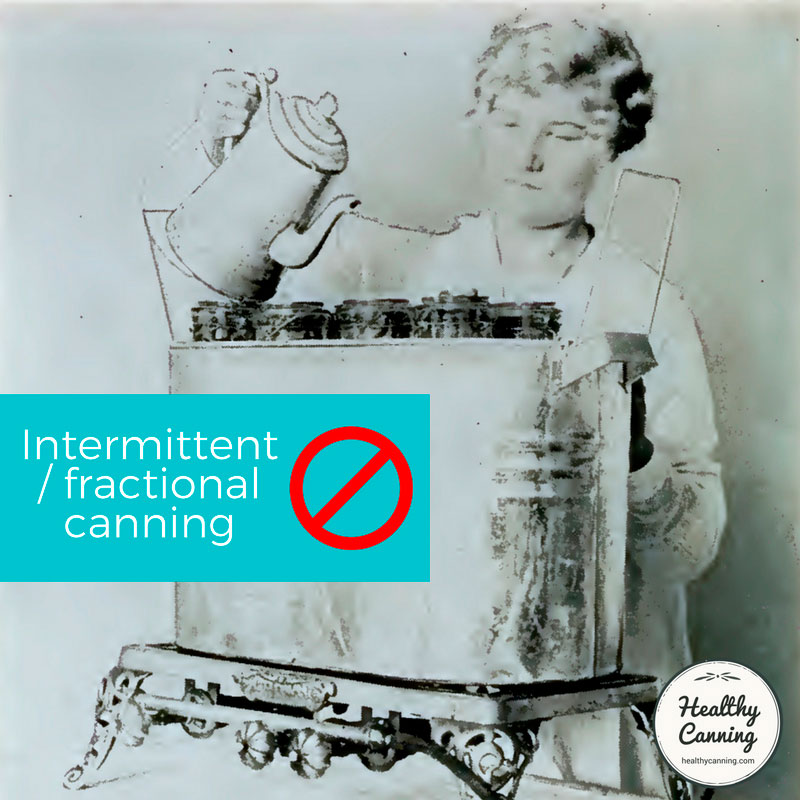
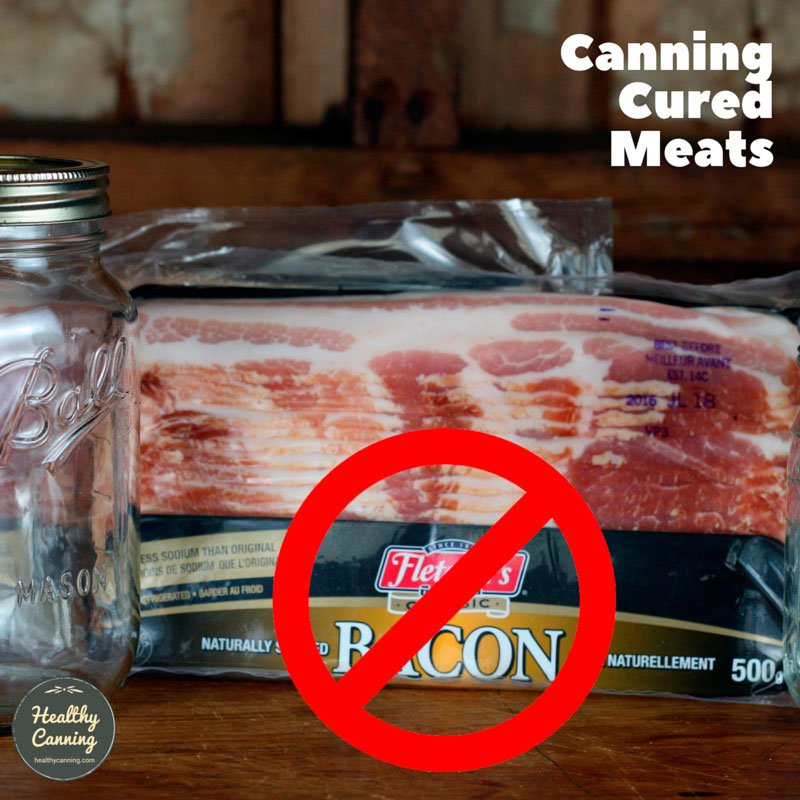
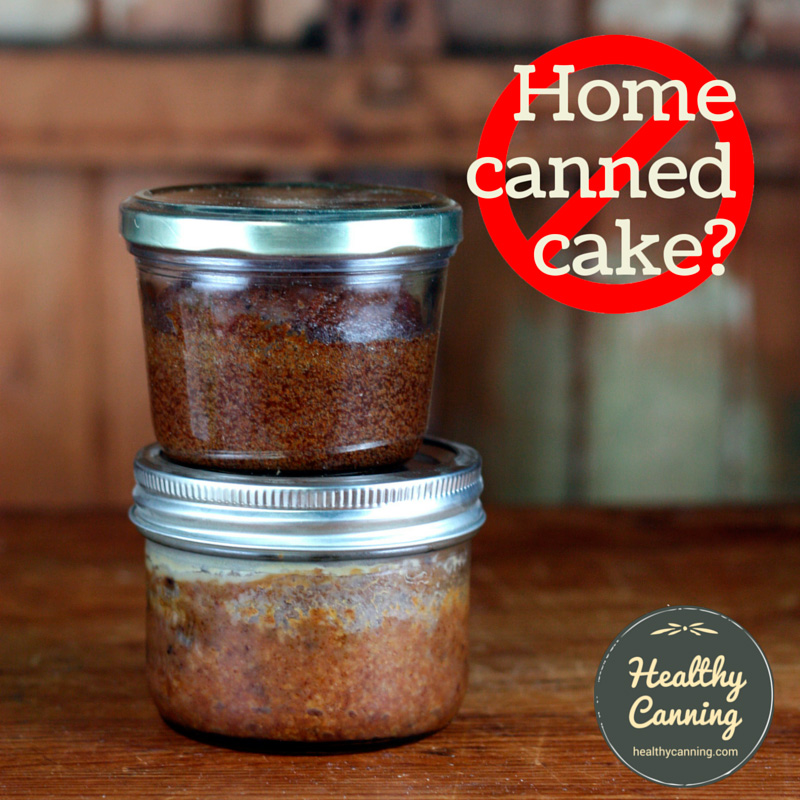
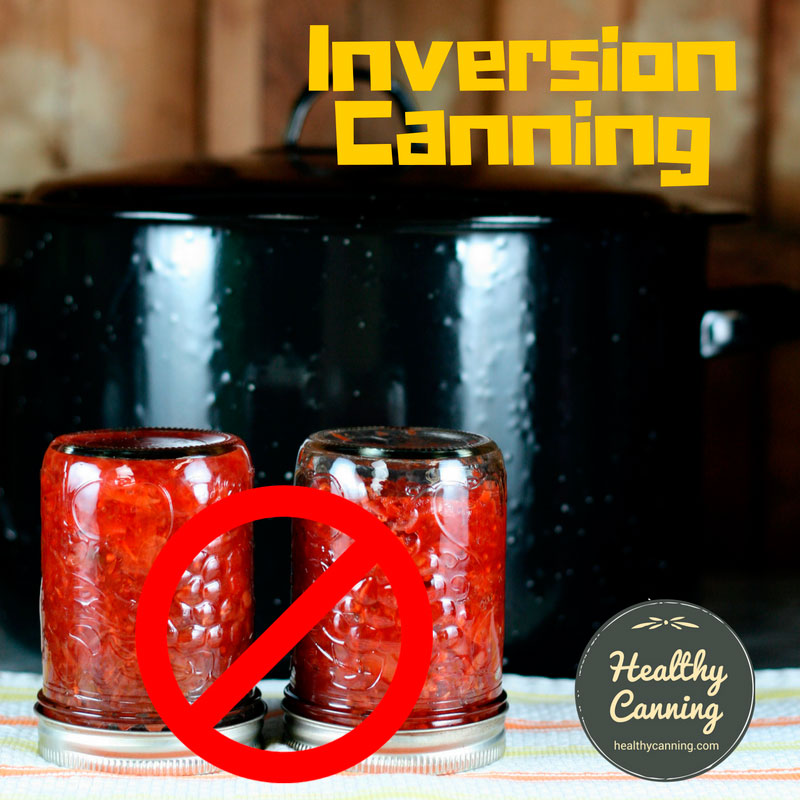
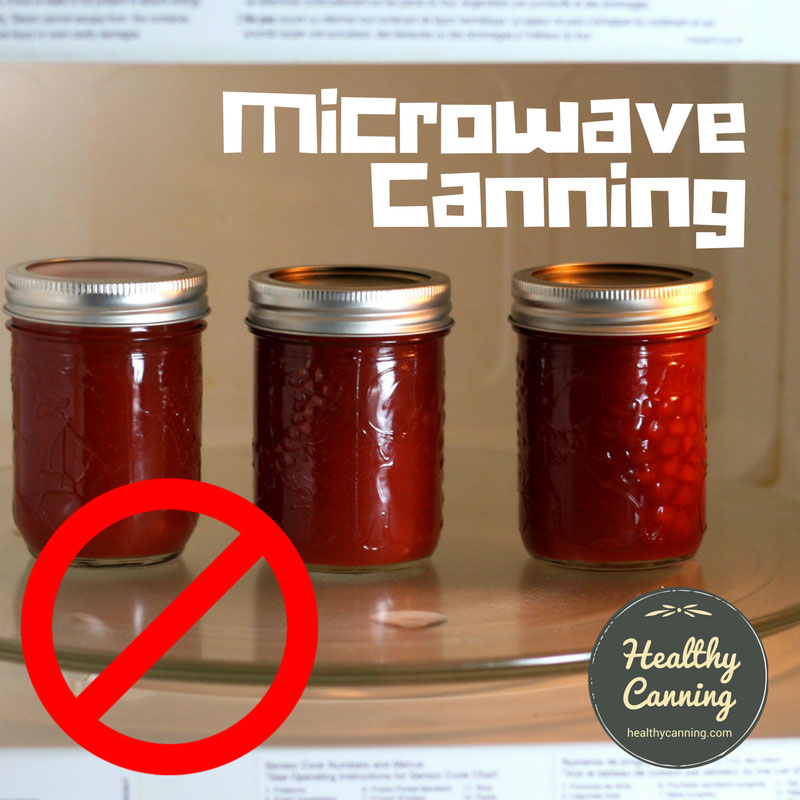
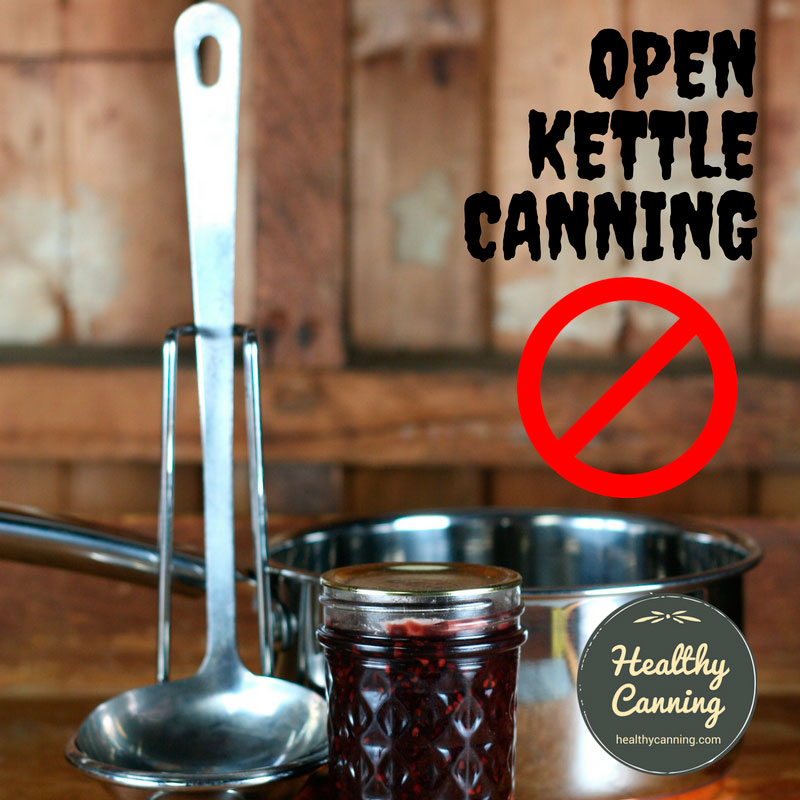
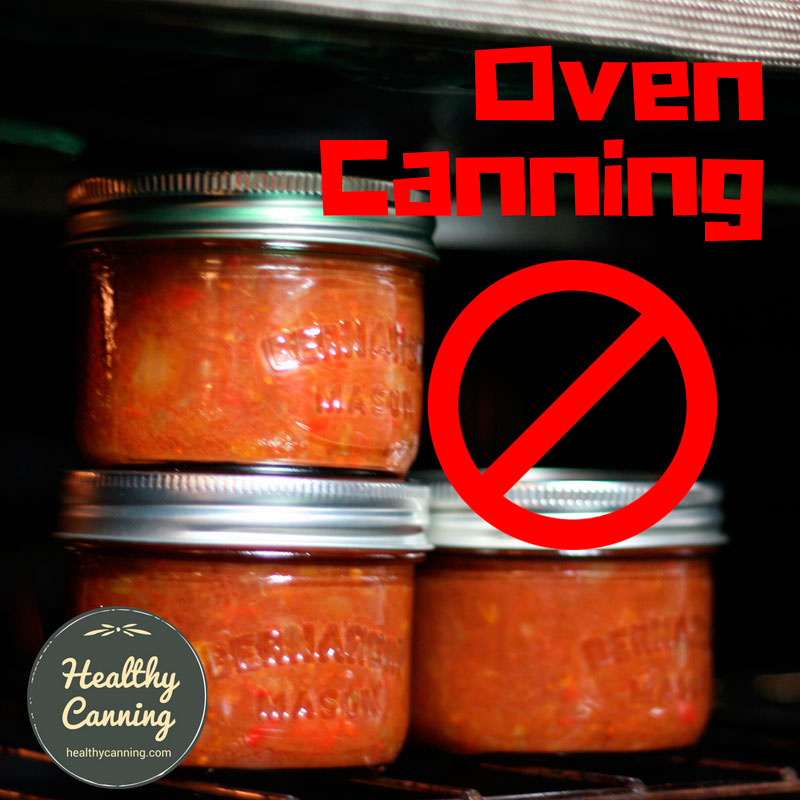
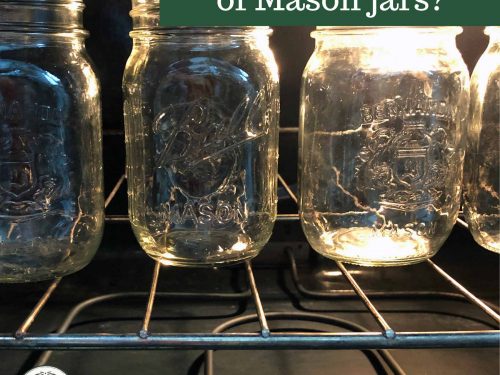
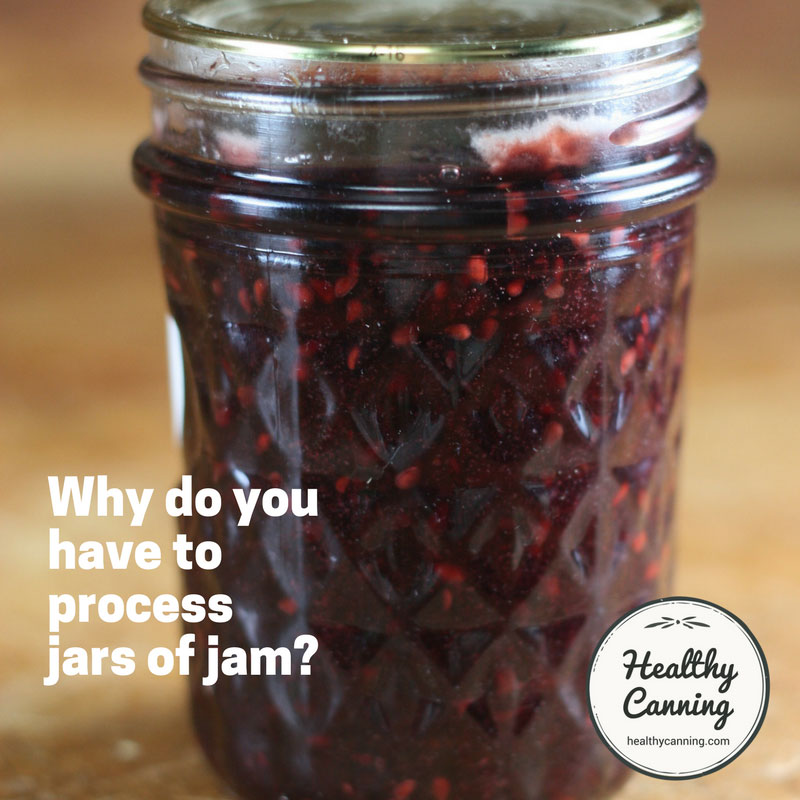
RC
What I find interesting in some of these comments about people using old canning methods thinking they’re fine. In 2015 someone made potato salad from their water bathed potatoes, took the salad to a church picnic and killed two people and sickened twenty-nine others. Sure, you might get away with it for years on end but is it really worth the risk?
Jack Gilbert
Hello, I grew up in the USA but have moved to Spain. I want to start canning but they dont have mason jars here. What they do have are these, and I would liek to know if they are safe to use for pressure canning: https://www.amazon.es/Frasco-vidrio-conservas-720-Pack/dp/B06X15LFY1/?_encoding=UTF8&pd_rd_w=84OaL&content-id=amzn1.sym.e938e71b-2a18-43eb-855b-f4edce2ba725&pf_rd_p=e938e71b-2a18-43eb-855b-f4edce2ba725&pf_rd_r=VDZBM302G2Z0NC4KDCJ1&pd_rd_wg=joV8R&pd_rd_r=199f0e6f-819f-45e2-b750-ac3432009137&ref_=pd_gw_ci_mcx_mr_hp_atf_m
Healthy Canning
Consider look at Weck jars, Leifheit Jars, Quattro Stagioni jars or Kilner jars, all available in Europe. If you search Healthy Canning, you’ll find info on all those jars.
Suzanne
Yes, but like Ball jars, you should only use the lids one time. The problem with these jars is that you cannot remove the rings after processing. So, if the seal breaks and then the jar reseals, you would not know, though by design, the seal is less likely to break.
We lived in Europe for seven years and this was the only reasonably priced option they had.
Geri
Canning with flour is an unsafe practice.
Healthy Canning
UNLESS it is called for in a lab-tested recipe, in which case, it is then safe.
Brian Oskaar
Thank-you for not mincing your words. So important.
jan
On the “must pressure can only” part. That only applies in the usa, MOST countries don’t even have pressure canners and water bath everything aproximately 3 hours. You might want to note that in your list because usda fda do not rule for everyone lol.
Healthy Canning
The rules of science and of food safety know no borders. No amount of bluster and huffing and puffing about those “Americans” is going to change that.
Ashley P
3 hours? All you do is wreck the nutrients of your food. No matter how long you hot water bath the temperature will never exceed 212 degrees Fahrenheit. Temps over 212 are required for low acid foods. Only temps over 212 can kill the kind of bacteria that dwell in a low PH environment. Reaching temps over 212 can only be done with a pressure canner. Pressure canners/cookers are used in many parts of the world not just USA. It’s science not a national identity thing
Kentherlan
My late grandmother used a wash tub next to the creek and canned with an open fire for hours until it sealed. It didn’t kill her, my grandfather, my Aunts & uncles as childrennor me. I don’t have any problems with the old ways. I see it done in many parts of the world and they are alive and well.
Healthy Canning
“I see it done in many parts of the world and they are alive and well.” Except for the ones that dropped like flies. What you said is exactly like saying “Smoking is safe because I knew a woman who smoked a pack a day till the age of 90 and she never got lung cancer, and since she didn’t, no one else will either.”
kathy
Please help me I bought an electric pressure cooker assuming I could can in it. I am hearing mixed reviews and makes me nerves.
Healthy Canning
Regardless of what manufacturers may try to claim, all reputable home canning authorities are explicitly warning against using those machines for home canning. Many people who have tried report loss of food and work as the jars spoil on the shelves. https://nchfp.uga.edu/publications/nchfp/factsheets/electric_cookers.html
Freddie
Many of the electric pressure cookers do advertise safe canning but the government website strictly says it isn’t safe – the temperature inside the jars cannot get hot enough and you could get botulism from the contents. I bought one of the electric pressure cookers for canning – the ad on tv showed so many ways to can. But after reading on the government webpage for the guidelines, I never canned in mine – it’s great for cooking meats fast for dinner, etc., but not canning.
Colleen
How do you feel about substituting Yves Ground Round for ground beef in a soup recipe that is being pressure canned?
Healthy Canning
Colleen, that is a soy product. We checked on that several years ago with the National Center for Home Food Preservation. There has not been any funding to test home canning soy meat anagrams so they have no recommendations to offer on that for safe canning. Nor do they know of anyone else in Canada or the US who has invested in any testing to arrive at safe processing recommendations. Sorry.
gg miles
How long do herbed stewed tomatoes put hot into a clean mason jar last in the refrigerator?
Healthy Canning
So instead of canning them, you will just use the jars as temporary storage containers in the fridge? In that case, regular food storage rules would apply — 3 to 5 to 7 days, depending on who you read.
Arnold 7
Every time I do canning… It is not finished until pressure cooked ! just for safety sake .
Healthy Canning
Sadly, that’s just rolling the dice and you are probably better off saying a Hail Mary instead. Safety is following a tested recipe from a reputable source, exactly. “Pressure cooking” a jar of pickles won’t do anything except increase your cooking fuel bills.